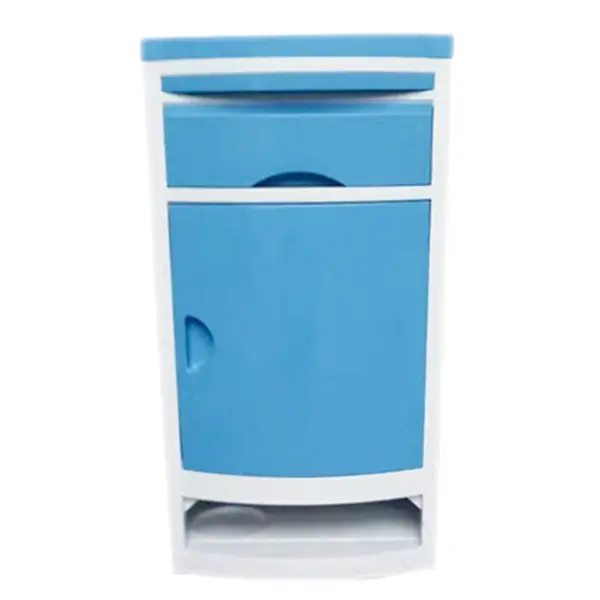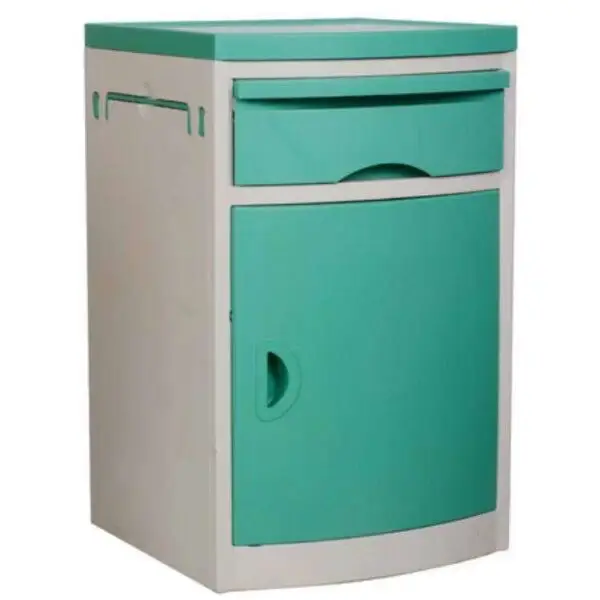Endereço
304 North Cardinal St.
Dorchester Center, MA 02124
Horas de trabalho
Segunda a sexta: 7h00 - 19h00
Fim de semana: 10h - 17h
Antes de mergulharmos no conteúdo, adoraria que você se juntasse a mim nas minhas plataformas de mídia social, onde compartilho mais insights, interajo com a comunidade e posto atualizações. Veja como você pode se conectar comigo:
Facebook:https://www.facebook.com/profile.php?id=100071234835011
LinkedIn:https://www.linkedin.com/company/74943205/admin/dashboard/
YouTube:www.youtube.com/@shandongexpertmedicalequip4695
TikTok:www.tiktok.com/@expertmedical
Agora, vamos começar nossa jornada juntos. Espero que você ache o conteúdo aqui perspicaz, envolvente e valioso.

Hospital bed bedside tables play a crucial role in patient comfort and convenience. Often overlooked, this essential piece of furniture can significantly impact a patient’s hospital experience. By optimizing the design and functionality of a hospital bed bedside table, healthcare facilities can improve patient satisfaction, ease of access, and overall comfort. This blog provides a comprehensive guide on how to optimize your hospital bed bedside table, exploring its key features, benefits, and practical tips for enhancement.
A hospital bed bedside table is more than just a piece of furniture; it serves as a critical support system for patients. Its primary functions include providing a convenient space for personal items, assisting with meals, and offering a surface for medical supplies.
An optimized hospital bed bedside table should incorporate several key features to maximize comfort and functionality. Here’s what to consider:
An adjustable height feature allows the bedside table to be positioned at the most comfortable level for the patient. This flexibility is crucial for both patient and healthcare provider ease of use.
Swivel or locking wheels enable easy maneuverability and stability. Patients or healthcare staff can move the table closer or further away as needed, while locking wheels ensure the table remains in place during use.
A well-built table with a sturdy frame and surface is essential for durability and safety. Materials such as high-quality metal or reinforced plastic can provide stability and longevity.
Incorporating drawers or compartments for storage helps keep personal items and medical supplies organized and within reach. This feature also aids in reducing clutter around the bed area.
Hospital environments require high levels of hygiene. A bedside table with smooth, easy-to-clean surfaces and materials helps maintain a sanitary environment and simplifies cleaning procedures.
An ergonomic design considers the patient’s comfort and ease of use. Features such as rounded edges, non-slip surfaces, and accessible storage contribute to a better overall experience.
The following table summarizes the key features to look for in an optimized hospital bed bedside table and their benefits:
| Recurso | Descrição | Benefícios |
|---|---|---|
| Altura ajustável | Allows for height adjustments. | Enhances patient and staff comfort. |
| Swivel/Locking Wheels | Provides mobility and stability. | Facilitates easy repositioning and stability. |
| Construção robusta | Made from high-quality materials. | Ensures durability and safety. |
| Storage Options | Includes drawers or compartments. | Keeps items organized and accessible. |
| Superfícies fáceis de limpar | Smooth, hygienic surface materials. | Simplifies cleaning and maintenance. |
| Design ergonômico | Features designed for comfort. | Improves patient comfort and usability. |
To make the most of your hospital bed bedside table, consider these practical tips:
Customize the table based on the specific needs and preferences of the patient. For example, provide additional storage if the patient has multiple personal items or ensure the height is adjusted to their comfort level.
Modern bedside tables can include technology such as built-in charging ports for electronic devices or integrated lighting for convenience. Consider adding these features to enhance patient comfort and functionality.
Arrange the table’s contents in a way that ensures easy access for both the patient and healthcare staff. Items frequently used by the patient should be within easy reach, while medical supplies should be organized and accessible for caregivers.
Perform regular checks and maintenance to ensure the table remains in good condition. This includes inspecting wheels for smooth operation, ensuring drawers function correctly, and checking for any damage or wear.
Ensure that the table is stable and that all features are functioning correctly to prevent accidents. For example, locking wheels should be securely engaged, and drawers should have smooth and safe mechanisms.
Optimizing the design of a hospital bed bedside table can significantly enhance patient comfort and satisfaction. Here’s how thoughtful design contributes to a better patient experience:
A well-designed bedside table provides patients with easy access to their personal items and essentials, which can help reduce stress and anxiety. This sense of control over their environment contributes to overall comfort.
Convenient access to items such as medications, water, and personal belongings helps patients feel more at ease. This convenience also supports their independence and contributes to a positive hospital experience.
An optimized bedside table can facilitate better interaction between patients and healthcare providers. For example, having medical supplies within reach allows for more efficient care and communication.
Comfortable and convenient surroundings can positively impact a patient’s recovery process. By ensuring that the bedside table meets their needs, you contribute to a more supportive and healing environment.

Even with careful planning, certain issues may arise with hospital bed bedside tables. Here are some common problems and their solutions:
Issue: Difficulty in adjusting the table height or malfunctioning height mechanisms.
Solution: Regular maintenance checks to ensure proper function. If issues persist, consult with the manufacturer or consider upgrading to a model with improved height adjustment features.
Issue: The table becomes cluttered with items, making it difficult for patients and staff to find what they need.
Solution: Use organizational tools such as drawer dividers or trays to keep items sorted. Regularly declutter and assess the table’s storage needs to maintain organization.
Issue: Wear and tear on the table surface or structure over time.
Solution: Choose tables made from high-quality, durable materials. Perform regular inspections and address any signs of damage promptly to prevent further deterioration.
Issue: Difficulty in cleaning due to complex surfaces or materials.
Solution: Opt for tables with smooth, easy-to-clean surfaces. Use appropriate cleaning agents and techniques to maintain hygiene and cleanliness.
Optimizing your hospital bed bedside table is a crucial step in enhancing patient comfort and satisfaction. By focusing on key features, practical tips, and thoughtful design, you can significantly improve the functionality and convenience of this essential piece of furniture. Regular maintenance and attention to patient needs ensure that the bedside table remains a valuable support tool in the hospital setting, contributing to a better overall experience for both patients and healthcare providers.
What features should I look for in a hospital bed bedside table?
Look for features such as adjustable height, swivel or locking wheels, sturdy construction, storage options, easy-to-clean surfaces, and an ergonomic design. These features enhance functionality and comfort.
How can I personalize a bedside table for a patient’s needs?
Customize the table based on the patient’s preferences and requirements, such as adjusting the height, adding extra storage, or incorporating technology like charging ports or lighting.
What are some common issues with hospital bed bedside tables?
Common issues include problems with height adjustment mechanisms, clutter and disorganization, durability concerns, and cleaning difficulties. Regular maintenance and appropriate choices in table design can address these issues.
How often should a hospital bed bedside table be maintained?
Regular maintenance should be performed to ensure the table remains in good condition. This includes inspecting wheels, checking drawers, and cleaning surfaces. Maintenance frequency may vary based on usage and conditions.
Can technology be integrated into a hospital bed bedside table?
Yes, modern bedside tables can integrate technology such as built-in charging ports, lighting, and even electronic controls. Incorporating these features can enhance patient convenience and comfort.
